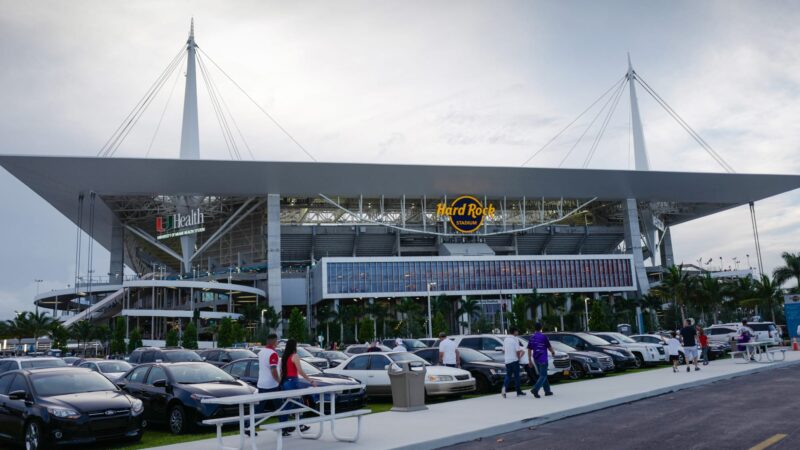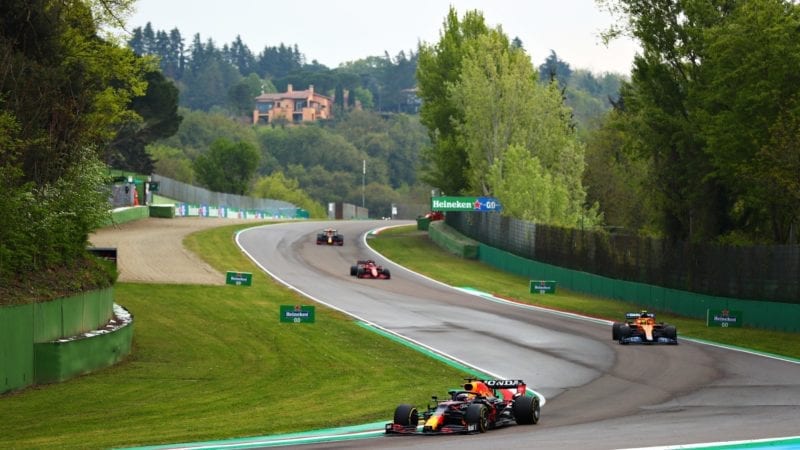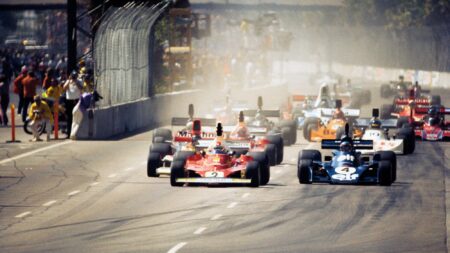Imola we’ve already had, Portimao we head to next. Nürburgring and Turkey have both been mooted as potential replacements for Canada in June should Montreal not happen. Only Mugello hasn’t been talked about as a repeat venue.
There are still clearly big-money races added that don’t sit well with everyone – Saudi Arabia joining the calendar this year after Vietnam all but fell through – but expanding into markets that will pay such fees has long been a part of the sport’s set-up, and it’s about getting the right balance.
And the way I see it, Miami’s confirmation is just the missing part of the jigsaw. A new location in a market that clearly has untapped potential, and one that brings the sport closer to a major city than some existing venues do.
But it’s the existing venues that actually form the need for this piece, because one of the main dissenting opinions against a race in Miami is the parking lot style circuit when there are many iconic tracks in the States.
It’s no secret America has some awesome circuits. Laguna Seca, Watkins Glen, Road America, Sonoma… It’s a pretty long list of tracks that would be brilliant to watch an F1 car on, but it’s also a list that just isn’t realistic. In fact, there’s only a list of three that can currently host F1, and two of them are COTA and the new Miami venue.
The other is Indianapolis, which has been linked with a return to the calendar and has obviously got huge appeal in the motor racing world. But the desire to get classic venues on the schedule is currently being met in F1’s existing European heartland.
There are 22 circuits in Europe that can currently host F1 – half of the global total – and of those, 11 currently do, or are at least set to this year. That number could become 12 if Turkey or the Nürburgring replaces Montreal.

The Hard Rock Stadium in Miami is the next American F1 venue
Matthew Ashton – AMA/Getty Images
And I think it’s an aspect that has been overlooked by anyone criticising some of the new tracks making their way onto the F1 calendar. Variety is important when it comes to a world championship, and drivers should be tested in a number of different ways, but ensuring that half of the races in a season take place on classic European venues that perhaps can’t pay the huge race-hosting fees I mentioned before is a pretty decent trade-off.
Imola’s chances of being a factor in future years have clearly increased, and let’s not forget that we’re heading back to Zandvoort this season after last year’s aborted effort.
And that’s before we expand our horizons outside of Europe and acknowledge the iconic tracks such as Suzuka and Interlagos that remain on the calendar. Add in Mexico City and Melbourne – including attempts this year to improve the racing potential at Albert Park – and you’re reeling off tracks that punish mistakes in locations with massive fanbases.
That’s also not to say we don’t have other great tracks on the calendar right now, even if some of them are relatively new. COTA is a very good venue for the sport in Texas, while Singapore is a spectacular test and a flagship event even if overtaking is difficult.
By now I’ve listed so many races either directly or indirectly that I’m only left with Bahrain, Baku, Russia and Abu Dhabi that haven’t had a mention, and we’ve seen some absolute classics at some of those venues. But for those who really don’t like them, it’s a small price to pay to then be able to have some of your favourites on there.



